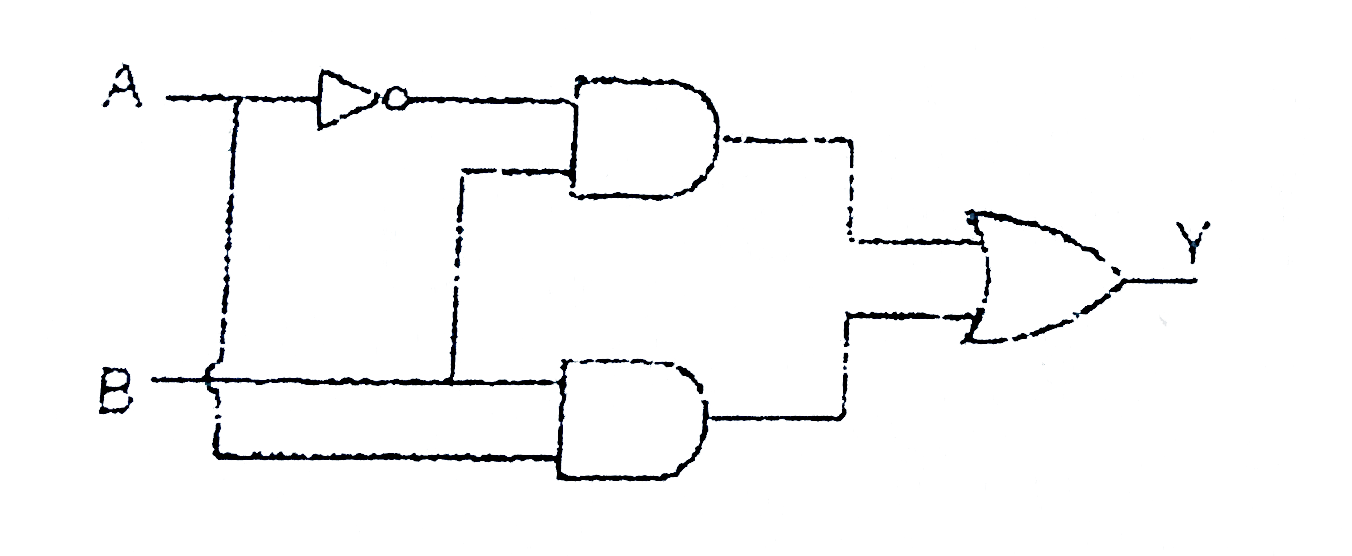Construct truth tables for the following :
(p⇒q)∧(q⇒p)
The correct Answer is:(##SCHOPMISCMATXIC27E06017_A01##)
[Recall that p => q is false only when p is true and q is false ]
To construct the truth table for the expression (p⟹q)∧(q⟹p), we will follow these steps:
Step 1: Identify the variables
We have two variables: p and q.
Step 2: List all possible truth values
The truth values for p and q can be either True (T) or False (F). Therefore, we have the following combinations:
1. p=T,q=T
2. p=T,q=F
3. p=F,q=T
4. p=F,q=F
Step 3: Create the truth table structure
We will create a table with the following columns:
- Column 1: p
- Column 2: q
- Column 3: p⟹q
- Column 4: q⟹p
- Column 5: (p⟹q)∧(q⟹p)
Step 4: Fill in the truth values for p⟹q
The implication p⟹q is defined as follows:
- True if both p and q are true.
- False if p is true and q is false.
- True if p is false (regardless of q).
Now, we fill in the values for p⟹q:
1. p=T,q=T → p⟹q=T
2. p=T,q=F → p⟹q=F
3. p=F,q=T → p⟹q=T
4. p=F,q=F → p⟹q=T
Step 5: Fill in the truth values for q⟹p
The implication q⟹p is defined similarly:
- True if both q and p are true.
- False if q is true and p is false.
- True if q is false (regardless of p).
Now, we fill in the values for q⟹p:
1. p=T,q=T → q⟹p=T
2. p=T,q=F → q⟹p=T
3. p=F,q=T → q⟹p=F
4. p=F,q=F → q⟹p=T
Step 6: Fill in the final column for (p⟹q)∧(q⟹p)
Now we will perform the AND operation between the two previous columns:
1. T∧T=T
2. F∧T=F
3. T∧F=F
4. T∧T=T
Final Truth Table
Now we can summarize our truth table:
| p | q | p⟹q | q⟹p | (p⟹q)∧(q⟹p) |
|---------|---------|---------------------|---------------------|--------------------------------------------|
| T | T | T | T | T |
| T | F | F | T | F |
| F | T | T | F | F |
| F | F | T | T | T |
We have two variables: p and q.
The truth values for p and q can be either True (T) or False (F). Therefore, we have the following combinations:
2. p=T,q=F
3. p=F,q=T
4. p=F,q=F
We will create a table with the following columns:
- Column 1: p
- Column 2: q
- Column 3: p⟹q
- Column 4: q⟹p
- Column 5: (p⟹q)∧(q⟹p)
The implication p⟹q is defined as follows:
- True if both p and q are true.
- False if p is true and q is false.
- True if p is false (regardless of q).
2. p=T,q=F → p⟹q=F
3. p=F,q=T → p⟹q=T
4. p=F,q=F → p⟹q=T
The implication q⟹p is defined similarly:
- True if both q and p are true.
- False if q is true and p is false.
- True if q is false (regardless of p).
2. p=T,q=F → q⟹p=T
3. p=F,q=T → q⟹p=F
4. p=F,q=F → q⟹p=T
Now we will perform the AND operation between the two previous columns:
2. F∧T=F
3. T∧F=F
4. T∧T=T
Now we can summarize our truth table:
|---------|---------|---------------------|---------------------|--------------------------------------------|
| T | T | T | T | T |
| T | F | F | T | F |
| F | T | T | F | F |
| F | F | T | T | T |
Topper's Solved these Questions
- MATHEMATICAL REASONINGBook:ICSEChapter:MATHEMATICAL REASONINGExercise:EXERCISE 27 (G)
Explore 7 Videos
- MATHEMATICAL REASONINGBook:ICSEChapter:MATHEMATICAL REASONINGExercise:CHAPTER TEST
Explore 10 Videos
- MATHEMATICAL REASONINGBook:ICSEChapter:MATHEMATICAL REASONINGExercise:EXERCISE 27 (E)
Explore 29 Videos
- MATHEMATICAL INDUCTIONBook:ICSEChapter:MATHEMATICAL INDUCTIONExercise:Exercise (a)
Explore 1 Video
- MEASURES OF CENTRAL TENDENCYBook:ICSEChapter:MEASURES OF CENTRAL TENDENCYExercise:EXERCISE
Explore 14 Videos
Similar Questions

Truth table for the following is-
View SolutionConstruct truth tables for each of the following :
[(~p)∧q]⇒(p∨q)
View Solutionconstruct truth table for (~p)∧q
View Solutionconstruct truth table for p∨(~q)
View SolutionConstruct truth tables for each of the following :
q⇒[(~p)∨q]
View Solutionconstruct truth table for ~(p∧q)
View SolutionConstruct the truth table for p∧q.
View Solutionconstruct truth table for ~(~p∧~q)
View Solutionconstruct truth table for (~p)∧(~q)
View SolutionConstrust truth tables for the following statements :
~(p∧−q) (ii)~[(~p)∨(~q)] (iii)(p∧q)∧(~p)
View Solution